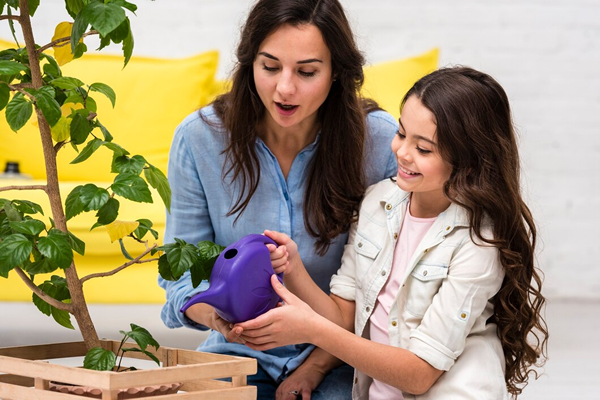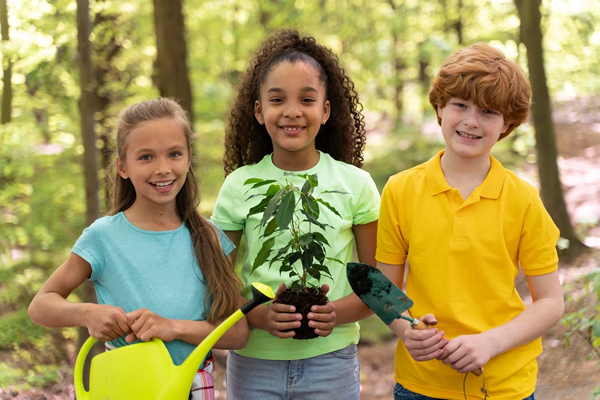Gardening immerses learners in the lifestyle of good and healthy food choices. Integrating sustainable gardening into STEM education can build resilience in learners. It enhances their ability to make positive choices in life. STEM education requires lifetime learning due to changing technologies.
In the same way, gardening promotes lifetime learning and self-efficiency. It fosters student connection with nature and reduces carbon emissions. Teachers need to use best practices in implementing gardening in STEM learning.

Enhancing STEM education outcomes through school gardening
The 21st global economy demands workers with diverse skills. STEM plays a critical role in research, writing, and technological development. It is important to introduce integrated STEM learning into academic degrees. It requires students to gain hands-on experience while schooling. Teachers need to add to the studies:
- Project-based learning
- Technology integrated learning
- Laboratory-based learning
- Practical based education
Modern students learn about environmental changes and imbalances through books. They conduct research and engage in paper writing to earn academic degrees. They looking for research papers for sale APA format to create the best quality paper. Writing services help students get plagiarism-free papers. They still need a practical approach so they should learn the ways themselves. Integrating gardening empowers them with the ability to make changes.
It prepares them to become good stewards of the environment. They acquire environmental education which develops curiosity in them about the planet. Theoretical learning in STEM education is useful. This approach sometimes leaves the learner in a hopeless situation. They feel they are not in a position to help or it is the work of another person. The integration provides them with a variety of benefits.
- Developing a positive attitude about STEM subjects. Many students think STEM subjects are difficult. With assistance with gardening practices, they learn the simplicity of science concepts.
- Improving student health and educational performance. It immerses learners in physical activities. They learn to grow healthy food and consume it. It enhances their physical and mental health which is important in educational performance.
- Developing awareness about the environment. Learners develop awareness about environmental sustainability and protection.
- Appreciates the use of technology in daily life. Daily, scientists use technology to measure weather, calculate measurements, and study life. They study plants, insects, buildings, and garden design. This involves a wide range of fields including mathematics, engineering, technology, and science. It enhances students' learning experiences and fosters a deeper understanding of scientific concepts.

Best practices for integrating gardening into STEM education
The school garden should expose students beyond a single subject. It should help them learn concepts of science, engineering, technology, and mathematics. Educators need to train students not to wait for assistance all the time. Gardening should help them develop ideas for research and paper writing. The following best practices are important to observe.
Create a funding model for STEM-gardening integration
Gardening needs resources that students might not be able to provide. It requires healthy plants or seeds, gardening tools, and applications. Educators may seek grants or donations. They may request the school administration to include a budget.
Get space within the school or at a near distance
If the school has a large piece of land, it can set aside space for gardening. If not, it can get space nearby preferably at a walking distance. This makes accessibility easier and eliminates inconveniences. It helps manage the space easier.
Prepare STEM educators through training
Before teaching, STEM teachers need to learn how to integrate gardening into teaching. They need to understand the approaches to use in teaching concepts from a gardening perspective.
Make the garden diverse
Target integrating diverse plant life. Involve the students fully. Let them take up tasks like:
- preparing the compost
- initial tilling, seedbed
- transplanting
It helps them learn every aspect of gardening. They understand better its application in the STEM subject they are studying.
Grow food and integrate it into the school feeding program
Let the student grow food for use in the school. Help them take part in preparing it for consumption. Sell any excess food and reinvest the proceeds into more gardening. Have a strategy for attracting pollinators.
Develop rules from the start
Create rules that must be strictly followed. Create rules such as:
- Walk on the paths all the time
- Keep records
- Keep the garden clean
- Respect pollinators and keep the soil healthy
Let gardening resonate with the current STEM curriculum
Do not separate the curriculum from gardening. Students should not treat it as a separate activity but as part of the study. If they are learning math, focus on learning math in the process. If they are studying science, focus on learning science in the process.
Conclusion
Integrating gardening in STEM learning benefits students in many ways. They appreciate environmental conservation. It promotes healthy eating and living a healthy life. Educators need to embrace best practices for STEM education. Gardening needs to resonate with the current curriculum. Educators need to be trained and there needs to be a funding strategy for the project.
